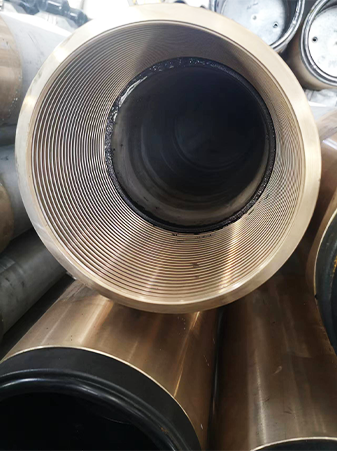- Afrikaans
- Albanian
- Amharic
- Arabic
- Armenian
- Azerbaijani
- Basque
- Belarusian
- Bengali
- Bosnian
- Bulgarian
- Catalan
- Cebuano
- Corsican
- Croatian
- Czech
- Danish
- Dutch
- English
- Esperanto
- Estonian
- Finnish
- French
- Frisian
- Galician
- Georgian
- German
- Greek
- Gujarati
- Haitian Creole
- hausa
- hawaiian
- Hebrew
- Hindi
- Miao
- Hungarian
- Icelandic
- igbo
- Indonesian
- irish
- Italian
- Japanese
- Javanese
- Kannada
- kazakh
- Khmer
- Rwandese
- Korean
- Kurdish
- Kyrgyz
- Lao
- Latin
- Latvian
- Lithuanian
- Luxembourgish
- Macedonian
- Malgashi
- Malay
- Malayalam
- Maltese
- Maori
- Marathi
- Mongolian
- Myanmar
- Nepali
- Norwegian
- Norwegian
- Occitan
- Pashto
- Persian
- Polish
- Portuguese
- Punjabi
- Romanian
- Russian
- Samoan
- Scottish Gaelic
- Serbian
- Sesotho
- Shona
- Sindhi
- Sinhala
- Slovak
- Slovenian
- Somali
- Spanish
- Sundanese
- Swahili
- Swedish
- Tagalog
- Tajik
- Tamil
- Tatar
- Telugu
- Thai
- Turkish
- Turkmen
- Ukrainian
- Urdu
- Uighur
- Uzbek
- Vietnamese
- Welsh
- Bantu
- Yiddish
- Yoruba
- Zulu
stainless pipe coupling
Understanding Stainless Steel Pipe Couplings
Stainless steel pipe couplings are essential components in various plumbing and piping systems. Known for their durability, corrosion resistance, and strength, these fittings are widely used in residential, commercial, and industrial applications. This article will explore the significance, types, benefits, and applications of stainless steel pipe couplings.
What is a Stainless Steel Pipe Coupling?
A stainless steel pipe coupling is a short piece of pipe with male threads on both ends that joins two sections of pipe. It is typically used to connect pipes of the same or different diameters, offering flexibility in piping systems. Couplings are integral to ensuring a leak-proof and secure connection, which is vital for the overall performance of any piping arrangement.
Types of Stainless Steel Pipe Couplings
There are various types of couplings, categorized by their design and application
1. Threaded Couplings These fittings feature external threads (male threads) that can connect to corresponding female threads on the pipes, making installation straightforward. Threaded couplings are common in low-pressure applications.
2. Socket Weld Couplings This type involves welding the pipe end into a socket, creating a strong and permanent bond. Socket weld couplings are often used in high-pressure and high-temperature applications.
3. Butt Weld Couplings These couplings are designed to be welded directly to pipe ends, providing a seamless and robust connection. Butt weld couplings are favored in heavy-duty applications where durability is paramount.
Benefits of Stainless Steel Pipe Couplings
stainless pipe coupling

1. Corrosion Resistance One of the primary advantages of stainless steel is its ability to resist corrosion and rust. This property makes stainless steel pipe couplings ideal for environments that are exposed to moisture, chemicals, and harsh conditions.
2. Strength and Durability Stainless steel is known for its strength, which means these couplings can withstand high pressures and stresses without failing. This makes them suitable for critical applications in industries such as oil and gas, food processing, and pharmaceuticals.
3. Temperature Resistance Stainless steel can endure high and low temperatures without losing its structural integrity. This versatility allows for their use in a variety of environments, from freezing cold to extreme heat.
4. Hygiene In applications where hygiene is essential, such as in food and beverage processing, stainless steel couplings do not harbor bacteria and are easy to clean, adhering to health and safety regulations.
5. Aesthetic Appeal Stainless steel has a shiny, modern appearance that can enhance the visual appeal of piping installations. This aspect is often considered in architectural and design applications.
Applications of Stainless Steel Pipe Couplings
The versatility of stainless steel pipe couplings makes them suitable for numerous applications
- Water Supply Systems Used in plumbing systems to connect pipes, ensuring a consistent supply of water without leaks. - Waste Management Utilizing couplings helps in connecting sewer and drainage pipes, maintaining proper flow and preventing blockages. - Industrial Applications In factories and manufacturing plants, stainless steel couplings connect pipelines carrying gases, liquids, and other substances, crucial for efficient operations. - Chemical Processing The resistance to corrosion makes stainless steel couplings ideal for transporting chemicals safely, preventing leaks and contamination.
Conclusion
Stainless steel pipe couplings are crucial in ensuring the integrity and efficiency of piping systems across various sectors. Their strengths, including corrosion resistance, durability, and hygienic properties, make them the preferred choice in critical applications. As industries continue to prioritize sustainability and efficiency, the demand for high-quality fittings like stainless steel couplings is likely to rise, further solidifying their role in the future of plumbing and piping engineering.
-
Tubing Pup Joints: Essential Components for Oil and Gas OperationsNewsJul.10,2025
-
Pup Joints: Essential Components for Reliable Drilling OperationsNewsJul.10,2025
-
Pipe Couplings: Connecting Your World EfficientlyNewsJul.10,2025
-
Mastering Oilfield Operations with Quality Tubing and CasingNewsJul.10,2025
-
High-Quality Casing Couplings for Every NeedNewsJul.10,2025
-
Boost Your Drilling Efficiency with Premium Crossover Tools & Seating NipplesNewsJul.10,2025







